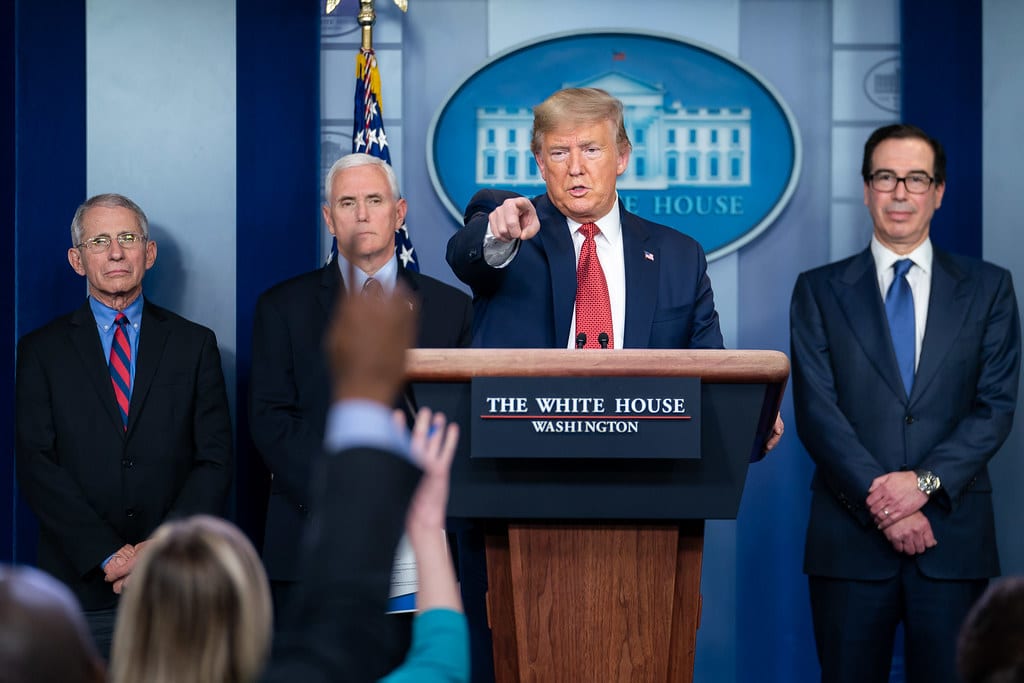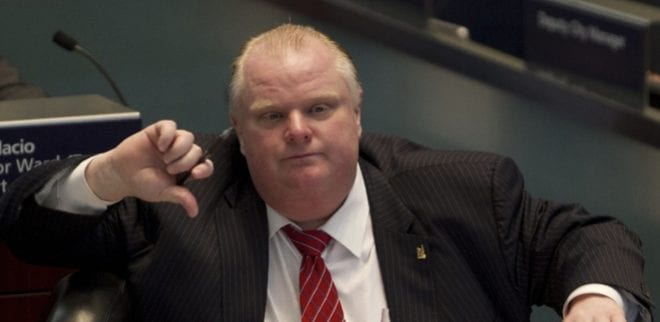
HEALS Act: Thumbs Up and Down
Ross Marchand
July 27, 2020
After months of anticipation, bitter partisan infighting, and contentious press interviews, the Senate has finally released their $1 trillion blueprint for the next phase of coronavirus relief called the Health, Economic Assistance, Liability Protection, and Schools (HEALS) Act. The legislation includes everything from liability protections to tax credit expansions to forgivable loans to direct appropriations. Encouragingly, lawmakers decided to forgo blank checks to states and localities, instead tying relief to specific items and issue areas. But, there’s plenty of wasteful spending in the bill, and the price-tag could easily wind up expanding. To help taxpayers make sense of confusing programs and dense legislative text, the Taxpayers Protection Alliance (TPA) gives the thumbs up and down on key provisions below:

Healthcare rate-setting left out of bill
For months, media reports suggested that a Senate bill may include federal price controls on healthcare services. Sen. Lamar Alexander (R-Tenn.) and Rep. Frank Pallone (D-N.J.) have urged for rate-setting to “solve” the pressing issue of surprise medical billing, a problem that occurs when an out-of-network doctor attends to patients at an in-network hospital. An out-of-network doctor cannot recoup healthcare expenses from insurers and winds up sending unwanted, unexpected bills in the mail to patients days or even weeks after discharge.
But as California’s experience shows, price-fixing healthcare services to address surprise billing would create more problems than it would solve by increasing consolidation and paving the way for fewer satisfied patients. Now is the worst possible time to export that model nationwide. Kudos to Sen. McConnell for rejecting rate-setting (price controls) and leaving it out of the bill.
Forgivable Loans
The Paycheck Protection Program (PPP) has doled out nearly $520 billion in forgivable loans to roughly 5 million businesses. Unfortunately, well-heeled companies connected to affluent individuals such as Robert De Niro and Kanye West have also managed to score significant amounts of taxpayer dollars. In addition, at least nine lawmakers have received PPP loans, an unacceptable conflict of interest. The latest expansion of PPP proposed in the Senate GOP bill tries to mitigate some of these issues by narrowing eligibility to businesses with less than 300 employees (compared to the current threshold of 500 employees).
In addition, businesses would need to demonstrate revenue losses of at least 50 percent compared to a pre-pandemic reference period in order to tap this new proposed PPP round. The program’s forgivable expenses are also expanded to include damage and supplier costs stemming from rioting and looting. Congress should pass these common-sense limitations and make a greater effort to hold lawmakers accountable for benefiting from PPP loans.
Unemployment insurance reform
Passed as part of the CARES Act, the current $600-per-week in expanded federal unemployment benefits run out on July 31. Over the past few months, policymakers have had a lively debate over what to do about allowing the deadline to expire or extending the deadline or even fine tuning the amount as the program is extended. Democrats have pushed for an open-ended expansion of this benefit, arguing that struggling Americans need the help. But according to the Congressional Budget Office, continued enhanced benefits would result in unemployment payouts exceeding previous take-home pay for more than 80 percent of recipients. As a result, the CBO predicts that “the extension of the additional $600 per week would probably reduce employment in the second half of 2020, and it would reduce employment in calendar year 2021.”
The Senate proposal avoids this issue by tying continued federal unemployment benefits to 70 percent of take-home pay. While this 70 percent threshold is implemented, the current $600-per-week federal benefit will be reduced to $200. While the transitionary amount can and will likely be higher once negotiations kick off, tying benefits to previous pay is an important step in the right direction. This plan allows households a continued lifeline during the pandemic while still incentivizing a return to work.

Rigid liability standards
Unfortunately, the Senate proposal attempts to impose a one-size-fits-all standard of liability onto consumers and businesses. As a result of these strict standards, patrons attempting to sue businesses for not making proper public health preparations will have to prove more than simple negligence. The plaintiff will need to prove gross negligence to win their case, and even if they do win, damages are strictly limited by a federal cap. While some of these remedies may make sense in some jurisdictions, states are in the best position to weigh different tort reform options as they reopen.
For example, in a state with a high incidence of coronavirus, it may make sense to have a high damages cap (or none at all) to reflect the increased risk of lax health measures put in place by businesses. Additionally, simple negligence (as opposed to gross negligence) may be a better fit for coronavirus-plagued states such as Arizona rather than states like Vermont with low case counts and deaths. Congress should encourage states to lead the way on tort reform, rather than imposing rigid top-down guidelines.
Fiscal pressure on reopening schools
The HEALS Act provides $100 billion for education. Roughly $70 billion is for the K-12 education system (including $10 billion for private schools), plus $30 billion for higher education and a $5 billion cherry on top for governors to allocate as they see fit. However, half of the $70 billion in K-12 spending will only be given to schools that transition away from online learning and provide a plan for in-person classes.
But, as explained by TPA in a piece in The Center Square last week, “in their rush to shape reopening policies, elected officials fail to appreciate the role that states and localities have in forging their own reopening paths. What works for New York students may not work for Iowa students. Jurisdictions and school districts across the country know what’s best for their kids, not federal bureaucrats 3,000 miles away.” Rather than dictating terms from Washington, D.C., school districts should be given wider latitude to decide how best to use federal dollars to adjust to COVID-19.
Miscellaneous wasteful spending
The Senate relief bill includes nearly $30 billion on top of the already-record Defense bill recently passed by the House and Senate. The recently passed $740 billion bill already includes taxpayer dollars to shore up pandemic readiness and tide over small contractors, in addition to larger line items such as a 3 percent troop pay raise and an astounding eight new Navy warships. But this big-ticket spending isn’t stopping Congress from spending an addition $21 billion to shore up the Pentagon and devoting $11 billion of those funds to compensating already well-paid contractors.
In addition to this Pentagon waste, the GOP bill provides $20 billion in direct payments to farmers and paves the way for more generous PPP calculations for farmers and ranchers (based on their 2019 gross income). Rather than continuing to subsidize politically connected agribusinesses, President Trump and Congress should work together to end the trade war and introduce real relief to America’s growers.
Relief checks
The bill also includes another round of economic impact checks, largely along the lines of the previous round of checks. Just as last time, individuals earning up to $75,000 per year will receive $1,200 while couples filing jointly and earning up to $150,000 per year will receive $2,400 (plus $500 per child). While this relief to struggling individuals and families is well-intentioned, it would be a far better idea to focus on direct tax relief. Instead of having taxpayers send their dollars halfway across the country and have their earnings sent back to them, lawmakers should let people keep more of their hard-earned dollars.
Many workers deemed “essential” are now earning less than those on unemployment insurance, yet there has been little direct relief for them in previous phases of relief (with the exception of stimulus checks). According to estimates by the Urban-Brookings Tax Policy Center, even a modest payroll tax cut could go a long way in tiding over millions of struggling households. For example, a 2 percent payroll tax cut could put more than $1,000 in the pockets of 121 million workers.
To conclude….
The Senate proposal has plenty to like, and rightly focuses programs such as PPP and unemployment insurance for struggling Americans. But lawmakers must work to root out waste and embolden states on issues such as liability reform and reopening schools. Stay tuned as TPA continues to update taxpayers and consumers on coronavirus relief efforts. The House will release their plan in the coming days and it has yet to be seen how much their legislation will cost and what kind of COVID-19 and non-related items will be a part of their bill.
